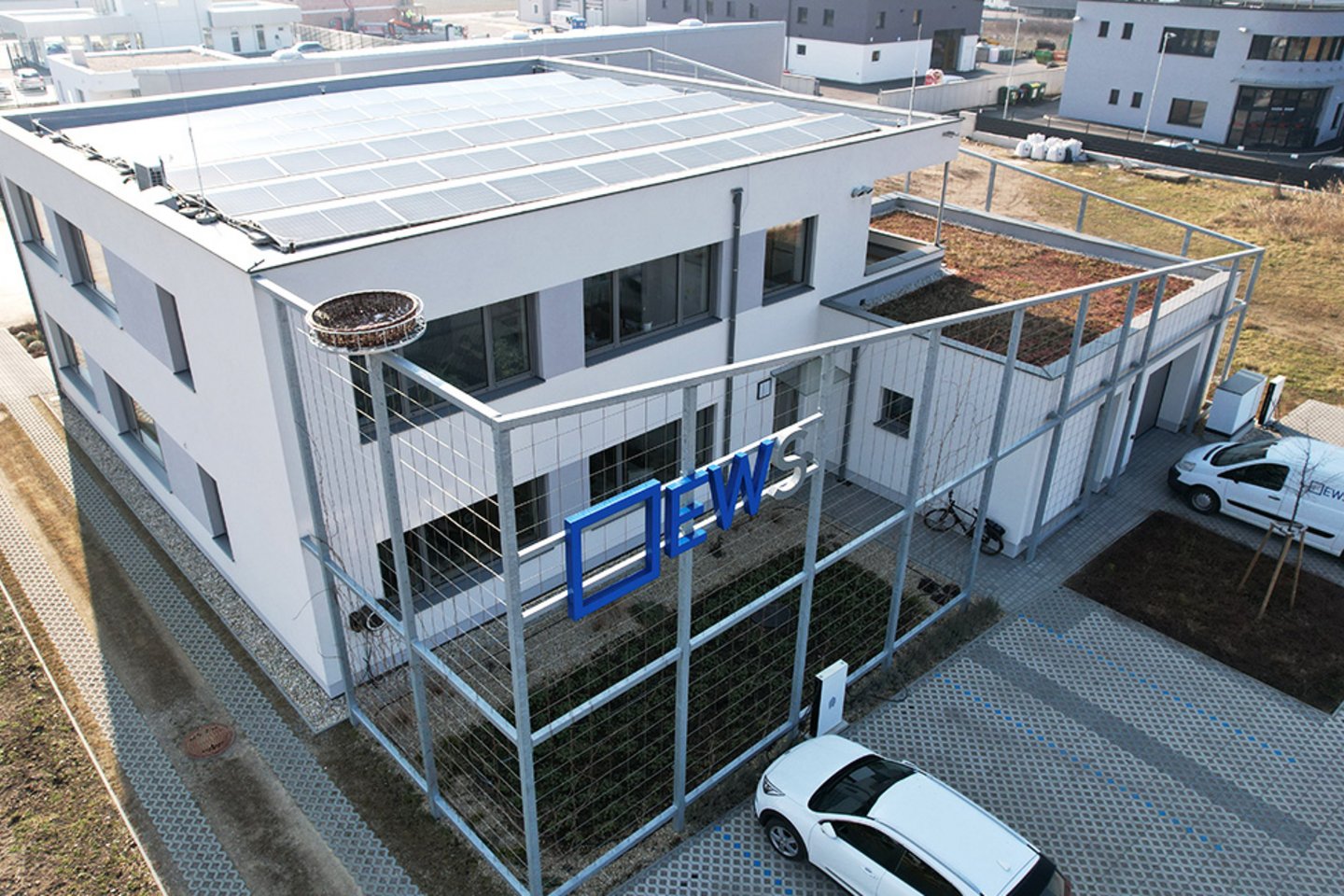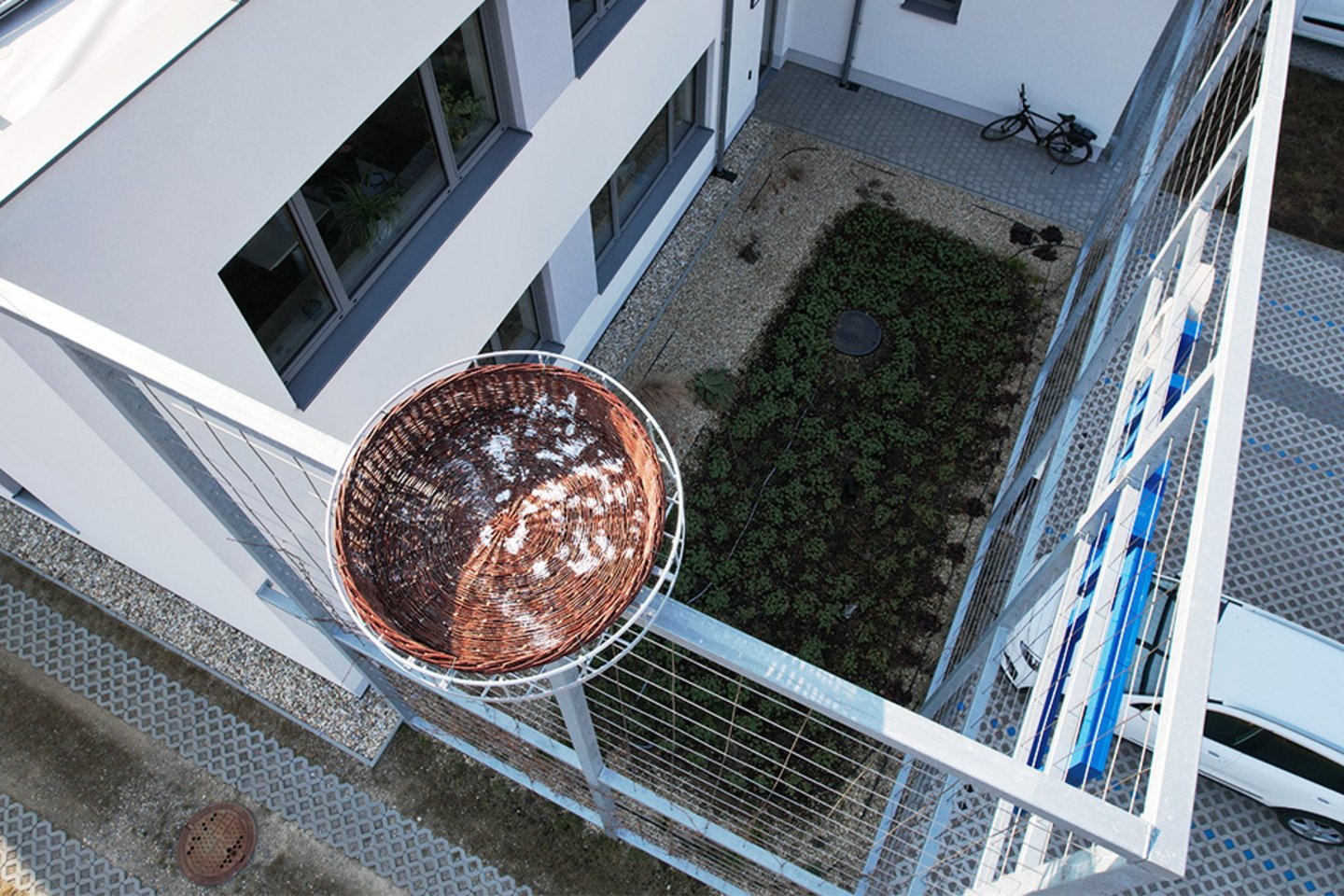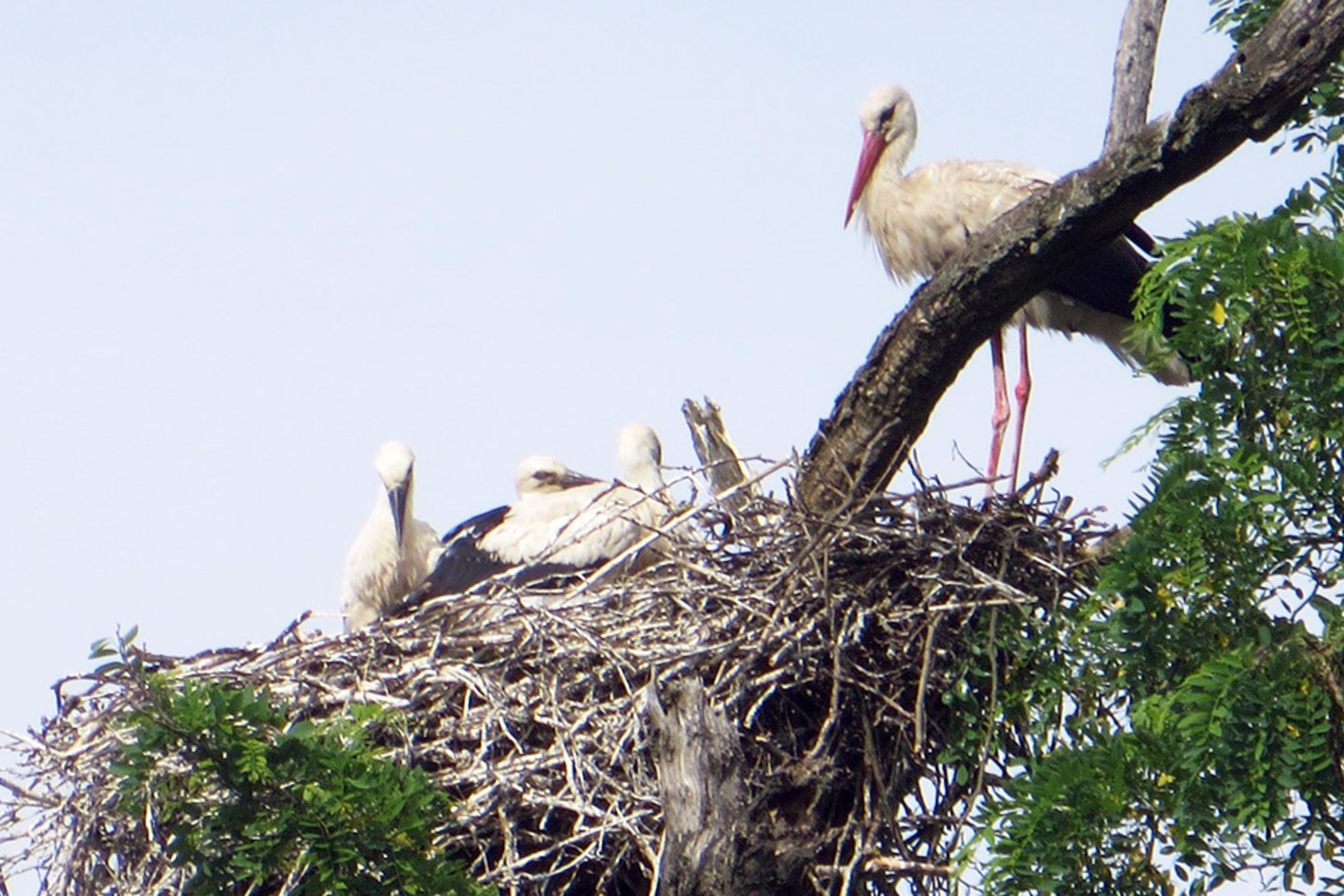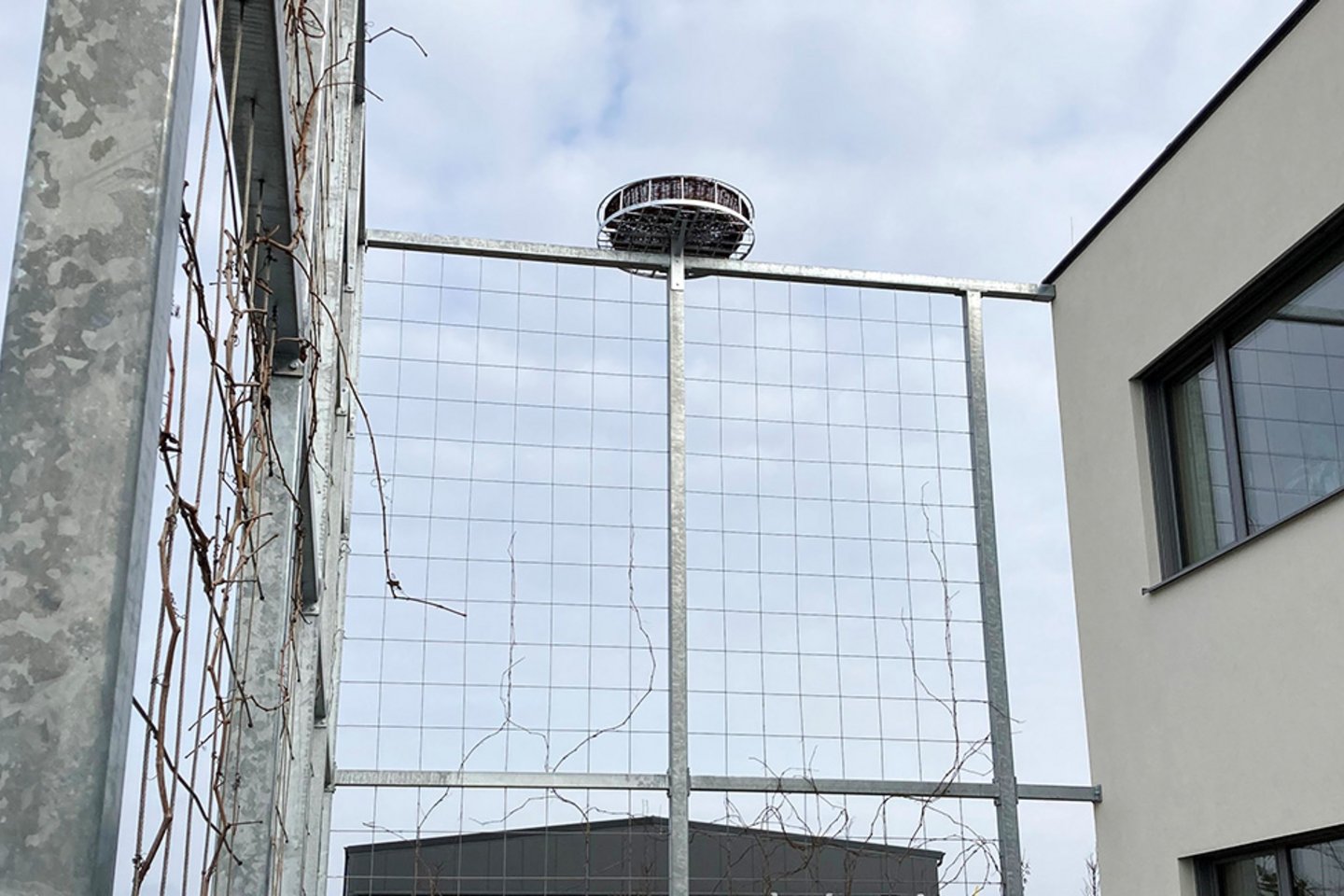Storks welcome at EWS!
The idea of providing a nesting place for a pair of storks on the office building in Parndorf arose during the construction of the new office building. There are several inhabited stork nests in the surrounding communities. Our planner Verena Bernardi found out what was needed: "My colleague Michael Riedl helped me with the planning. The eyrie construction came from Bird-Life. The steel construction was then specially built by a regional locksmith. A flat basket serves as the nesting aid base."
The nesting aid is intended for the white stork, they are basically very popular.
"White storks return from Africa soon in March/April. I see the chance of them using them this year at maybe 10%, in the medium term maybe 30%," says our biologist Michael Riedl, "but maybe someone else will nest there. We will see."
Did you know that a stork's nest can be up to 4 m high, up to 2 m in diameter and weigh up to 2 tonnes?
Stork couples are loyal to their nest and return to the nest they built together every spring if possible. Because they can live for over 35 years, they accumulate a lot of nesting material. Since not all buildings can support this weight, some of the nesting material is removed during the winter months.
If there is no stork nest from the previous year, or if a stork mates with a new female and even if breeding success failed the previous year, a new nest is built. The breeding season lasts about 30 days, with both partners taking turns. On average 3 young storks hatch from up to 8 laid eggs, which are white with fine grain and twice the size of a hen's egg. They spend about 60 days nesting in the eyrie.
According to our biologist, a birth explosion is now quite possible in Parndorf, but let's start with the baby storks first :-)




